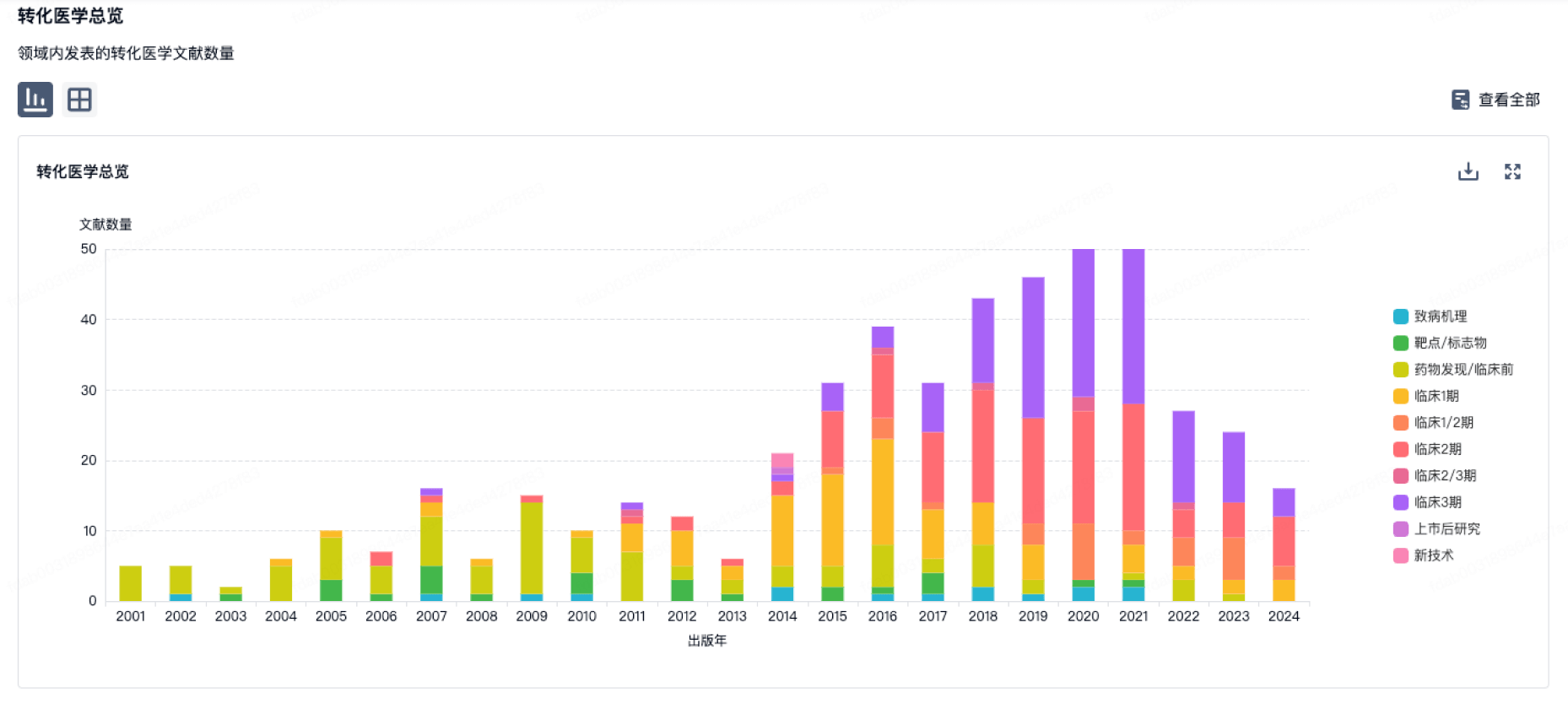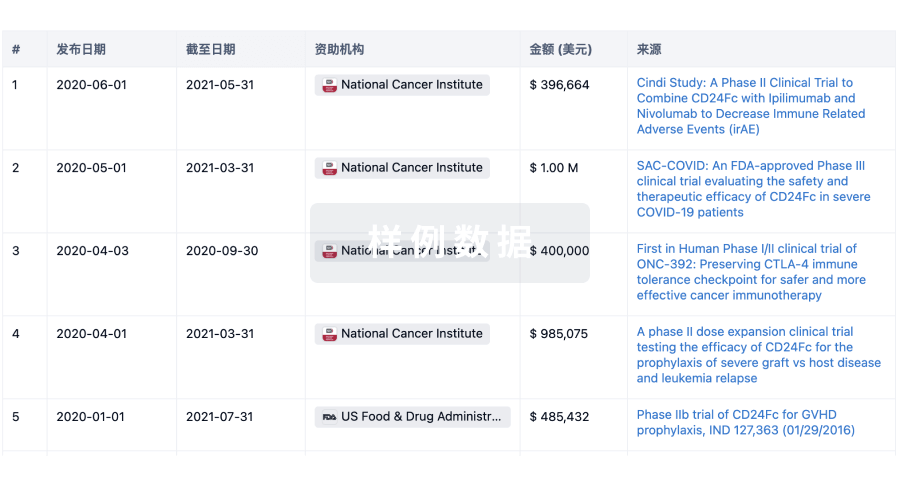预约演示
更新于:2025-06-02

Rin Institute, Inc.
更新于:2025-06-02
概览
标签
肿瘤
单克隆抗体
疾病领域得分
一眼洞穿机构专注的疾病领域
暂无数据
技术平台
公司药物应用最多的技术
暂无数据
靶点
公司最常开发的靶点
暂无数据
| 疾病领域 | 数量 |
|---|---|
| 肿瘤 | 1 |
| 排名前五的药物类型 | 数量 |
|---|---|
| 单克隆抗体 | 1 |
| 排名前五的靶点 | 数量 |
|---|---|
| fibrin(纤维蛋白) | 1 |
关联
1
项与 Rin Institute, Inc. 相关的药物CN115461462
专利挖掘靶点 |
作用机制- |
在研适应症 |
非在研适应症- |
最高研发阶段药物发现 |
首次获批国家/地区- |
首次获批日期- |
100 项与 Rin Institute, Inc. 相关的临床结果
登录后查看更多信息
0 项与 Rin Institute, Inc. 相关的专利(医药)
登录后查看更多信息
5
项与 Rin Institute, Inc. 相关的文献(医药)2022-01-01·Thrombosis and haemostasis2区 · 医学
A Novel and Potent Thrombolytic Fusion Protein Consisting of Anti-Insoluble Fibrin Antibody and Mutated Urokinase
2区 · 医学
Article
作者: Matsumura, Yasuhiro ; Saijou, Shinji ; Hanaoka, Shingo
Abstract:
Tissue plasminogen activator (tPA) is used clinically because it has a higher binding specificity for insoluble fibrin (IF) than urokinase (UK), but even pro-tPA has catalytic activity against substrates other than IF. UK has the advantage that it is specifically activated on IF; however, it binds IF weakly. Previously, we established a monoclonal antibody (mAb) that recognizes a pit structure formed only in IF. Here, we developed a new mAb against the pit, 1101, that does not affect coagulation or fibrinolysis, and prepared a fusion protein of UK with humanized 1101 Fab to transport UK selectively to IF. In IF-containing lesions, UK is cleaved by plasmin at two sites, Lys158/Ile159 and Lys135/Lys136. Cleavage of the former leads to activation of UK; however, because activated UK is linked by S-S bonds before and after cleavage, it is not released from the fusion. Cleavage at the latter site causes UK to leave the fusion protein; hence, we mutated Lys135/Lys136 to Gly135/Gly136 to prevent release of UK. This engineered UK-antibody fusion, AMU1114, significantly decreased the reduction of plasma plasminogen levels in vivo relative to UK. In a photochemically induced mouse model of thrombus, the vascular patency rate was 0% (0/10) in the control, 50% (5/10) in the tPA treatment group, and 90% (9/10) in the AMU1114 treatment group. Although no death was observed 1 hour after administration of each thrombolytic agent, some mice died within 24 hours in all treatment groups, including control. These data indicate the need for further basic studies of AMU1114.
2021-10-01·Translational oncology
TMEM180 contributes to SW480 human colorectal cancer cell proliferation through intra-cellular metabolic pathways
Article
作者: Anzai, Takahiro ; Saijou, Shinji ; Kurosawa, Hiroshi ; Matsumura, Yasuhiro ; Yasunaga, Masahiro ; Ohnuki, Yoshitsugu
TMEM180, a novel colon cancer-specific protein with a 12-transmembrane topology, is upregulated at low oxygen. Previously, we established a humanized monoclonal antibody against TMEM180 aimed at clinical trials. Prior to such trials, it is necessary to clarify the function of TMEM180 in cancer. To compare SW480 human colon cancer cells and their TMEM180-knockdown derivatives, we analyzed proliferation and oxygen consumption, and also performed phosphorylation proteomics, metabolomics, and next-generation sequencing (NGS). The preliminary results revealed that TMEM180 appeared to promote the growth of colon cancer but had almost no effect on oxygen consumption or expression of phosphorylated proteins. By contrast, glycolysis differed dramatically between SW480 and TMEM180-knockdown cells. The NGS analysis revealed that TMEM180 promotes enzyme expression in nitric oxide (NO) synthesis system, suggesting that it promotes glucose and glutamine metabolism, thereby contributing to cancer growth. Overall, the results of this study warrant further basic studies of TMEM180 molecule.
Pharmaceuticals (Basel, Switzerland)
Identification of CD73 as the Antigen of an Antigen-Unknown Monoclonal Antibody Established by Exosome Immunization, and Its Antibody–Drug Conjugate Exerts an Antitumor Effect on Glioblastoma Cell Lines
Article
作者: Anzai, Takahiro ; Saijou, Shinji ; Hanaoka, Shingo ; Takashima, Hiroki ; Yasunaga, Masahiro ; Matsumura, Yasuhiro ; Hara, Misato
Development of antibodies against the native structure of membrane proteins with multiple transmembrane domains is challenging because it is difficult to prepare antigens with native structures. Previously, we successfully developed a monoclonal antibody against multi-pass membrane protein TMEM180 by exosome immunization in rats. This approach yielded antibodies that recognized cancer-specific antigens on the exosome. In this study, we performed immunoprecipitation using magnetic beads to identify the antigen of one of the rat antibody clones, 0614, as CD73. We then converted antibody 0614 to human chimeric antibody 0614-5. Glioblastoma (GB) was the cancer type with the highest expression of CD73 in the tumor relative to healthy tissue. An antibody–drug conjugate (ADC) of 0614-5 exerted an antitumor effect on GB cell lines according to expression of CD73. The 0614-5-ADC has potential to be used to treat cancers with high CD73 expression. In addition, our strategy could be used to determine the antigen of any antibody produced by exosome immunization, which may allow the antibody to advance to new antibody therapies.
100 项与 Rin Institute, Inc. 相关的药物交易
登录后查看更多信息
100 项与 Rin Institute, Inc. 相关的转化医学
登录后查看更多信息
组织架构
使用我们的机构树数据加速您的研究。
登录
或

管线布局
2025年07月01日管线快照
管线布局中药物为当前组织机构及其子机构作为药物机构进行统计,早期临床1期并入临床1期,临床1/2期并入临床2期,临床2/3期并入临床3期
药物发现
1
登录后查看更多信息
当前项目
| 药物(靶点) | 适应症 | 全球最高研发状态 |
|---|---|---|
CN115461462 ( fibrin )专利挖掘 | 肿瘤 更多 | 药物发现 |
登录后查看更多信息
药物交易
使用我们的药物交易数据加速您的研究。
登录
或

转化医学
使用我们的转化医学数据加速您的研究。
登录
或

营收
使用 Synapse 探索超过 36 万个组织的财务状况。
登录
或

科研基金(NIH)
访问超过 200 万项资助和基金信息,以提升您的研究之旅。
登录
或

投资
深入了解从初创企业到成熟企业的最新公司投资动态。
登录
或

融资
发掘融资趋势以验证和推进您的投资机会。
登录
或

Eureka LS:
全新生物医药AI Agent 覆盖科研全链路,让突破性发现快人一步
立即开始免费试用!
智慧芽新药情报库是智慧芽专为生命科学人士构建的基于AI的创新药情报平台,助您全方位提升您的研发与决策效率。
立即开始数据试用!
智慧芽新药库数据也通过智慧芽数据服务平台,以API或者数据包形式对外开放,助您更加充分利用智慧芽新药情报信息。
生物序列数据库
生物药研发创新
免费使用
化学结构数据库
小分子化药研发创新
免费使用
